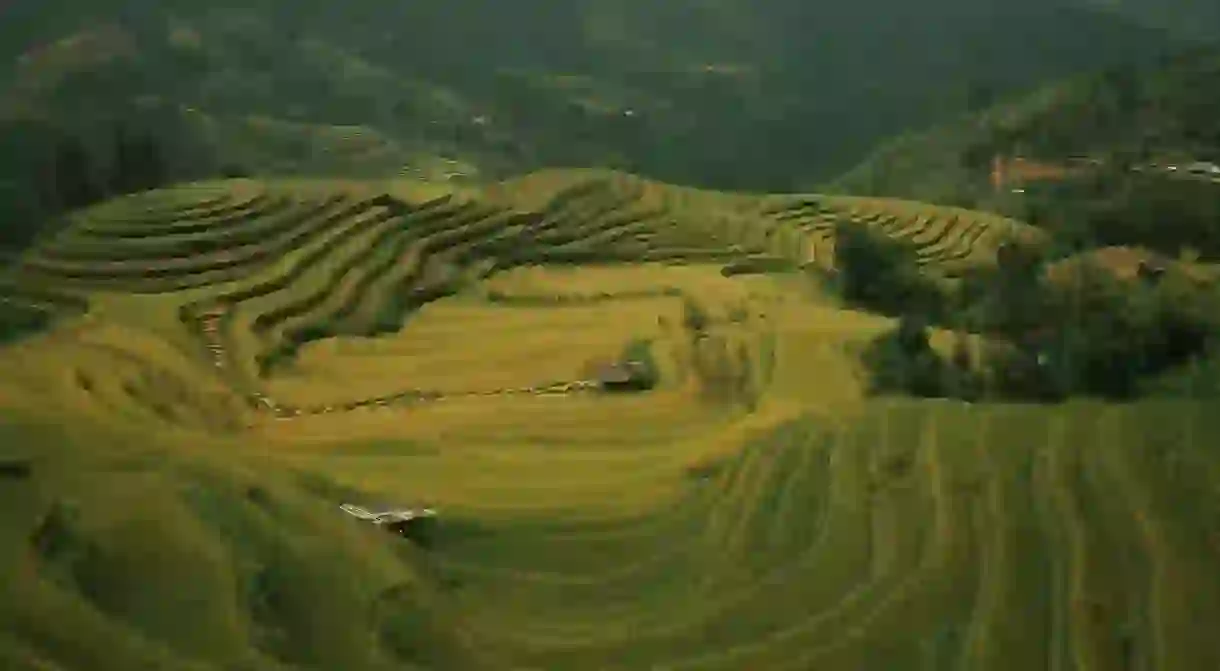Where to Find the Most Spectacular Rice Fields in Vietnam

From towering limestone islands jutting out of green waters to mountains covered in thick jungle, Vietnam is a country of vast and varied natural beauty. Arguably, the most majestic landscapes are the sprawling rice fields that carpet so much of the countryside. Not only are they an impressive sight to behold, but they’re also integral to the traditions of rural communities and an essential part of the national economy. Discover where you can find the best ones with Culture Trip.
Mai Chau
Natural Feature

Tucked away in a tranquil valley in the Hoa Binh province, 140km (87mi) southwest of Hanoi, you’ll find Mai Chau. Here, a flat patchwork of rice paddies carpet the valley floor, rather than sitting in mountainside terraces. It’s possible to take a day trip from the capital, but there are plenty of traditional homestays and eco-lodges if you fancy extending your trip.
Sa Pa
Natural Feature

The Hoang Lien Son mountains around Sa Pa, a large town in the north of Vietnam, boast the most iconic rice paddies in the country. The remote location means it’s not the easiest place to get to – it’s around a six-hour drive from Hanoi – but the views are well worth it. If you’re up for an adventure, consider joining a multi-day trekking tour. September to October is the best time to go, as this is when the rice field colours are at their most vivid.
Mu Cang Chai
Natural Feature

When looking at a map, Mu Cang Chai doesn’t appear that far away from Hanoi, but it’s actually one of the most remote rice field regions in Vietnam. It’s reached via the Khau Pha Pass – one of the steepest roads in the country – winding through the foothills of the Hoang Lien Son mountains. The journey is just as rewarding as the destination: upon arrival, you’ll be greeted with Vietnam’s most photogenic rice terraces. Tourism has increased substantially in recent years, but it’s still one of the country’s lesser discovered areas – ideal if you want to stay off the beaten track.
Hoi An
Natural Feature
Tam Coc
Natural Feature

Just 100km (62mi) south of Hanoi, Tam Coc is one of the most easily accessible rice field destinations in Vietnam and can be explored on a day trip from the capital – although you’ll probably want to stay for a night or two. The rice fields here are known as the “Green Sea”, occupying a long, flat valley floor between jagged karst formations, similar to those of Ha Long Bay. Explore by hiking, cycling, or by boat along the Ngo Dong River, which flows between the rice fields. March to early June is the prime window to visit.
Pu Luong
Natural Feature

Gently undulating hills covered in tropical rainforest give way to the rice fields of Pu Luong, 145km (90mi) southwest of Hanoi. Unlike mountain rice, which can be grown on terraces, the rice grown here needs to be submerged in water in order to thrive. Keep an eye out for water buffaloes, as well as bamboo water wheels dotted along the streams that carve through Pu Luong to help with irrigation. There are two annual harvest seasons here – from May to June and September to October – and both are optimal seasons to visit.
Bac Son
Natural Feature

Bac Son is situated in an idyllic valley surrounded by forested mountains in the Lang Son province of northeastern Vietnam. Favourable climate and fertile soil provide the perfect conditions for a sweeping expanse of rice paddies. For the ultimate panoramic vista, climb the 650m (2,132ft) trail to the summit of Na Lay peak – around a 45-minute ascent. Accommodation options here are quite limited, as the area remains well off the tourist trail, but there are numerous homestays in traditional stilt houses – offering an authentic experience for very reasonable prices.
Hoang Su Phi
Natural Feature

Not many travellers venture to the Ha Giang province in northeastern Vietnam, but those that do are treated to some of the country’s most beautiful scenery. The Hoang Su Phi district, in particular, boasts an abundance of cultivated rice terraces, especially around the villages of Ban Luoc – a great hiking spot – Bang Phung, Nam Ty and Ho Thau. Getting here by public transport is rather complicated, however, so you’re best off either hiring your own vehicle or joining an organised tour. September and October are the best months to visit, as the rice fields turn from green to golden.
The Best Trips and Tours in Vietnam
Natural Feature

Vietnam has many amazing charms, including its bustling vivacious cities, its magnificent natural landscapes and its wonderfully welcoming locals. From the buzzing streets of Ho Chi Minh City to the placid shores of Phu Quoc island, there’s so much to see and do – and these tours and trips will help you make the most of your visit to this stunning country.













